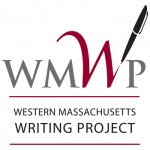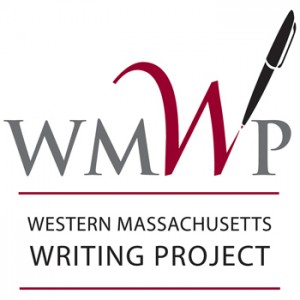 For the past nine months or so, I have been coordinating a partnership between our local newspaper (The Daily Hampshire Gazette) and our Western Massachusetts Writing Project. My role has been to solicit teachers in our writing project to write an educational column for the monthly education section of the newspaper. It’s a partnership that our writing project once had with another regional newspaper (The Springfield Republican) and it’s a natural fit, in a way.
For the past nine months or so, I have been coordinating a partnership between our local newspaper (The Daily Hampshire Gazette) and our Western Massachusetts Writing Project. My role has been to solicit teachers in our writing project to write an educational column for the monthly education section of the newspaper. It’s a partnership that our writing project once had with another regional newspaper (The Springfield Republican) and it’s a natural fit, in a way.
The newspaper needs columnists. Our teachers can write. And our writing project gets some nice benefits by being associated with some great writers and educators in a very public forum. (Unfortunately, they don’t get paid for writing for the newspaper.) While the newspaper runs a paid website for most of its content, they have agreed to provide us with public urls to the columns by our teachers. So, here is what we have written about and explored this year:
My wife, Leslie, is a media specialists/librarian at a vocational high school, and she has done a lot of work around book clubs for her students. A grant she received has allowed her to run after-school programs that now mesh books with film.
“When I started a book club at my school, I wasn’t so naïve as to imagine that high school students would choose multicultural classics, or even books with optimistic themes. But I also didn’t expect a steady diet of dystopian literature or books about youth getting a raw deal from those in power.” — read more of her column
Momodou Sarr teaches special education at a regional high school. His column was about the power of community and the power of expectations of our students, no matter the academic level. He also shows how project-based learning, with real involvement in the community, can make a difference.
“Teaching in a self-contained classroom means that a group of students becomes your family, in a way. It is interesting to watch how grade-level identities disappear. Students coming together in one classroom begin the difficult task of trusting each other, letting stereotypes melt away as they gain trust in each other as well as the teachers in the classroom.” — read more of his column
Alicia Lopez wrote about her experiences teaching at a middle school, and about how emerging student writers are a powerful group to be witness to, and help along. She also explains how difficult it can be for a teacher to juggle teaching with their own lives outside of school.
“I find it hard to believe that I am halfway through my 17th year as a language teacher. I have taught grades five to 12, and am now in my eighth year of teaching middle school in Amherst. Having come from a family of supremely dedicated and hard-working teachers, I resisted the profession for a long time. I saw the exhaustion and frustration on my parents’ faces after a long day of teaching and dealing with students. Eventually, though, the other side of that story is what has kept me teaching: the simple rewards of reaching a student, of making a connection, of, in the long run, changing a life.” — read the rest of her column
Michael Braidman teaches English and runs the Drama Club at a high school. He wrote about the experience of providing a multitude of rich experiences for his students, and watching them flourish on the stage.
“As educators, we find opportunities both in and out of the classroom. I’m fortunate enough to run my high school’s drama company, which, like all extracurriculars, provides valuable teaching experiences for its coach as well as great learning opportunities for participants. After school the auditorium becomes like a second classroom for me, a place where I engage students in intellectual discussions on literature (specifically, plays we’re producing) as well as teach them about the various tasks, materials and arrangements necessary to put on a theatrical production. When I bring together a cast and crew to prepare, rehearse and perform a play, I’m facilitating all sorts of learning, as well as giving students a chance to have some fun. Some of them also find unique leadership opportunities.” — read more of his column
Julie Spencer-Robinson used her column to tell the story of how she helps her middle school students understand empathy, and action on behalf of others.
““Who are those kids?” Andrew asked me. He was talking about the boy in the wheelchair who rolled down the hallway outside our sixth-grade classroom every day, accompanied by one or two of his classmates and their aides. “Oh, they’re in a special class down the hall,” I replied. Later, we learned that the name of the boy in the wheelchair was Gary, and he and Andrew quickly struck up a friendship. They would hang out together at Andrew’s locker, and Gary would use his communication device — or his aide — to crack jokes with his new friend. Pretty soon Gary was coming into our classroom to visit, and so were some of the other kids in his class. ” — read more of her column
And I kicked off the series last fall with a piece on understanding video gaming as I listened to my students.
“It’s become clear to me over the last few years that video gaming is one of those worlds that most teachers and most adults know very little about, and one area of youth culture that we are more likely to dismiss as entertaining diversions rather than immersive environments where interesting learning and skill development takes place. We’re more likely to dismiss gaming rather than embrace it.” — read more of my column
We’re proud of our teachers and about the ways we have worked with the newspaper to focus on our teachers as writers. Just as important, we know we have important things to say, and the newspaper has been just another way to reach our audience.
Peace (in the sharing),
Kevin



